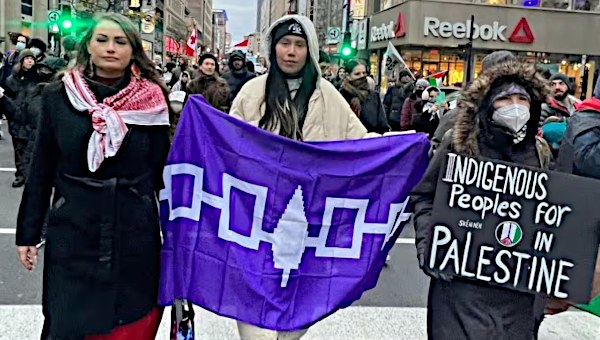The Colonial State and the Suppression of the Plains Cree
Chief Poundmaker and Chief Big Bear It is impossible to disentangle the making of the Canadian state from the history of European – and particularly French and British – imperialism and … Watch video »
Chief Poundmaker and Chief Big Bear
It is impossible to disentangle the making of the Canadian state from the history of European – and particularly French and British – imperialism and colonialism. In acts of incredible hubris and chauvinism, the territories of the Americas were claimed by Europeans – mediated by the great European churches – and pillaged, conquered, and divided, with the Indigenous peoples subjected to genocide, enslavement, subordination and marginalization. In the consolidation of the space of the contemporary Canadian state, that came with Confederation on July 1, 1867 and the subsequent nation-building project of the National Policy, the decisive act(s) was the suppression of the First Nations peoples of Canada.
The colonial occupation and usurpations of the First Nations territories that allowed the Canadian state to form culminated in the military battles against the uprising of the Métis people and the Plains First Nations in the second half of the 19th Century, with the pivotal confrontations of the North West Rebellion of 1885 in the Battle of Batoche and the Frog Lake Resistance.
The intent of the Canadian state and emerging capitalist ruling classes was quite explicit – appropriation of the Aboriginal lands, extinguishment of Aboriginal title (actually written into the Manitoba Act, and found, in assorted ways in the various treaties), marginalization of the First Nations to tiny and divided reserve territories, and settlement and commodification of the dispossessed lands by Europeans to build Canadian capitalism as an extension of the European political-economic space. The first Prime Minister of the new Canadian state, John A. Macdonald, led the nation-building project and, tellingly, served as the government minister in charge of Indian Affairs for much of this time, including during the critical prairie confrontations. The military deployments and treaties were some of the coercive instruments that Macdonald used to subjugate the Plains Cree (and other First Nations). But he also encouraged the Canadian state in the use of mass starvation, unjust trials and jailings, and, of course, the studied practice of breaching treaties (a practice that has never really stopped – nothing should get in the way of building Canadian capitalism – to this day).
In all this, it is most important that we continue to recall some of the heroes of the Plains resistance – Poundmaker and Big Bear, Dumont and Riel, and many others – and the legacies of the fathers of Canadian capitalism and their state that we still need to overturn today.
Pîhtokahanapiwiyin (c. 1842 – 4 July 1886), better known as Chief Poundmaker, was a Plains Cree chief known as a peacemaker and defender of his people.
Mistahi-maskwa (c. 1825 – 17 January 1888), better known as Chief Big Bear, was a powerful and popular Cree chief who played many pivotal roles in Canadian history.
Other resources:





